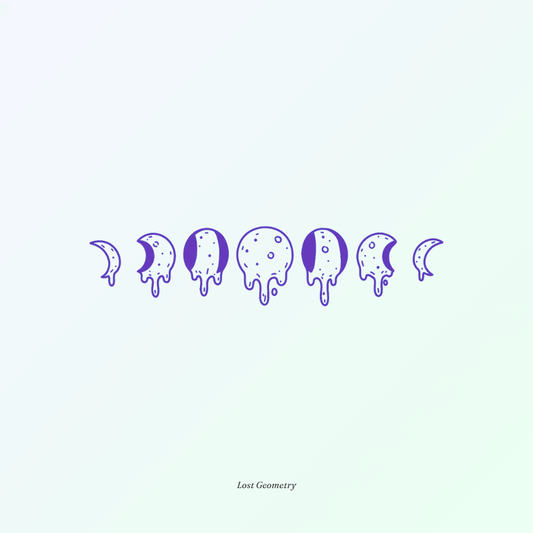The Hidden Geometry of Growth
Michael HileyUnderstanding progression stages in personal development,
and why rushing through stages fails.
Personal transformation follows geometric patterns as precise as mathematical equations. Like the moon's phases or the spiral of shell growth, development moves through predictable stages. Fighting these natural progressions creates struggle.
Aligning with them creates flow.
"There were many ways down Mount Fuji, according to my guidebook, but only one way up," writes Phil Knight in Shoe Dog.
Growth has its own logic, its own essential sequence that can't be skipped or shortened without consequence.
The Moon's Teaching
The moon phases illustration reveals how personal growth stages mirror natural cycles. New moon (beginning), waxing (building), full moon (peak), waning (integration), dark moon (rest).
Each phase serves specific purposes in the larger cycle.

Trying to maintain full moon energy constantly leads to burnout.
Rushing through dark moon phases creates shallow development.
Sustainable transformation honours the rhythm of expansion and contraction.
Five Natural Stages of Change
The three triangles geometric pattern shows how change builds in layers, each supporting the next:

Recognition — Becoming aware that change is needed or wanted.
This stage involves seeing current patterns clearly.
Exploration — Investigating new possibilities, gathering information, experimenting with different approaches.
Commitment — Choosing specific direction and dedicating energy to sustained effort toward change.
Integration — Making new patterns natural and automatic through practice and refinement.
Mastery — Operating from new level of competence, ready for next cycle of growth.
Working With Natural Progression
"Rest nurtures creativity, which nurtures activity," observe Kim John Payne and Lisa M. Ross in Simplicity Parenting.
This principle applies to all development. Active phases require rest phases for integration.
Growth mindset includes understanding that apparent plateaus are often integration periods where new capacities stabilise. What looks like stagnation may be essential consolidation.
Identifying Your Current Stage
Each stage of the change process requires different activities and has different emotional signatures:
Recognition stage feels unsettled, questioning, aware of gaps between current reality and desired state.
Exploration stage feels exciting, overwhelming, full of possibilities but lacking clear direction.
Commitment stage feels focused, determined, sometimes challenging as old patterns resist change.
Integration stage feels natural, flowing, as new behaviours become second nature.
Mastery stage feels competent, ready for new challenges, perhaps restless for next level growth.
Understanding your current stage helps you choose appropriate activities and maintain realistic expectations. The geometry of growth reveals that development is never linear—it's spiral, cyclical, building on previous foundations while reaching toward new possibilities.
Which stage of growth are you in right now, and what does that stage require?









